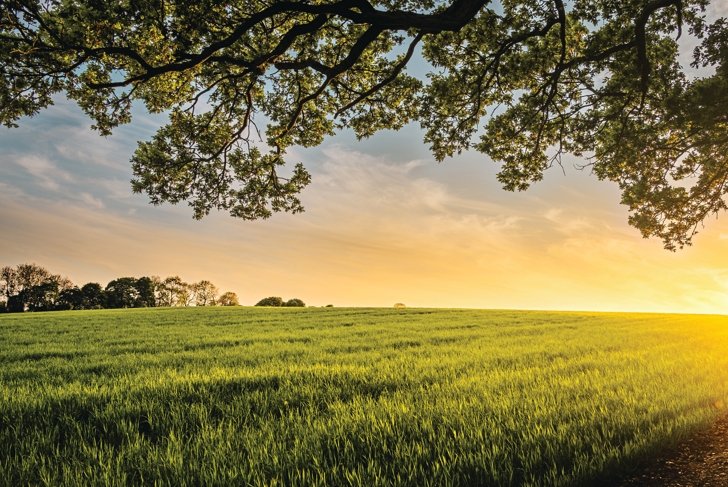
When my husband and I purchased a 130-year-old farmhouse in need of restoration, we had no idea we were also getting a forgotten treasure that would change our lives.
The farmhouse sat on a largely forested acreage near Ottawa, the capital of Canada. After months of renovations, I decided to create a trail system. I began cutting through the dense invasive forest and overgrown brush, venturing farther out each day.
One day, I stumbled upon a massive 30-foot apple tree.
Then I found a gnarly 25-foot-wide apple tree.
I began to discover an ever-increasing number of gorgeous old heritage apple trees, most of them between 25 and 40 feet tall. To date, I’ve found more than 50 trees.
Apples like no others
Perhaps more shocking than the size of these ancient apple trees is the vast array of unique varieties of apples. Even after countless hours scouring many websites, my husband and I have yet to find the bulk of our varieties anywhere else (we believe we’ve identified Newtown Pippin, Greasy Skins, and Snow apples).
Now that we know we’re the proud owners of an ancient apple orchard—we’ve dubbed it the Lost Orchard—we’re working to free the trees and catalogue and identify the rare varieties, which bear no resemblance, in look or taste, to today’s apples. Most of the apples have extremely dense flesh—much denser than the soft and sometimes pulpy varieties we’re accustomed to
These Victorian-era apples provide explosions of taste sensations, ranging from pearlike to wine-ish, and even a hint of beet flavor in one late-season variety. Some are yellow with red polka dots; others are green with a pink blush. Some have yellow undersides with coral tops; others are green with almost black spots. To say they are unlike any of the homogenous apples found in modern orchards or grocery stores would be a serious understatement.
Better yet, it’s clear from the surrounding weeds and invasive forest that no one could have entered the forest to spray them with pesticides and that these apples have been organically grown for decades, if not for their full lifespan. The lack of access also suggests that, without human intervention, they’ve survived extreme cold, droughts, flooding, pests, heat waves, and many other challenges.
Additionally, unlike most of today’s apples, which ripen in August or September, the apples in the Lost Orchard are ready for eating between July and November, including some varieties that seem to survive after the early frosts and snowfalls.
When I discovered the Lost Orchard, I’d already been doing food security work for more than two decades. The moment I spotted that first massive apple tree, my life took an astonishing turn, transforming what was already fulfilling work into an extraordinary and passionate adventure.
Why variety matters
When it comes to the produce we eat, variety is more than the spice of life. It’s the key to a healthy, resilient, and sustainable food supply. Yet, due to the commercialization of foods that favor factors like appearance or transportability over taste, nutritional value, resilience, or ability to survive changing climatic conditions, we’ve already lost thousands of varieties of foods, and many more are facing possible extinction. While most people are saddened by the extinction of animal species, few consider that foods also go extinct, leaving the food supply at risk.
Apples have become the poster child of food extinction. While we tend to think an apple is an apple and that they mostly look and taste alike (thanks to the dozen or so varieties sold in the grocery store), more than 6,100 varieties of apples have been lost to time.
There were 7,098 apple varieties documented as having been in use in America between 1804 and 1904. Since then, 86 percent have been lost.
It’s not just apples being lost, although apples are arguably the most at-risk food. This sad tale of perishing produce varieties is repeated in crop after crop all around the world.
Seventy-five percent of global food diversity has vanished in the last century. Industrial agriculture and the globalization of the food supply chain put crop selection in the hands of large corporations, vastly limiting selection and effectively squeezing out local and regional crop varieties that would have been staples at the beginning of the 20th century.
At that time, farmers and growers saved seeds from a vast array of produce. Seed saving ensured that diverse and locally relevant plant varieties were preserved and sustained year after year.
Sadly, this practice has diminished in the wake of the modern food industry taking charge of what crop varieties we buy in the store, as well as the seeds farmers grow. As early as 1999, the United Nations Food and Agriculture Organization reported that only 150 to 200 of the 300,000 known edible plant species are consumed by humans and, shockingly, 75 percent of the global food supply comes from only 12 plant species, including wheat, corn, and rice.
Get versed in diversity
Biodiversity is “the variety of life at genetic, species, and ecosystem levels.” In the field of agriculture, food is one element of agrobiodiversity.
But how many different varieties of apples do you need? Greater agrobiodiversity means less risk and greater sustainability in the food supply. Agrobiodiversity is an insurance policy against pests, disease, droughts, climate change, selective farming or commercialization practices, loss of pollinators, and other factors that affect our food supply.
When there are risks to the food supply, do you want food plants that have proven their resilience over time or do you want to take your chances with homogenous varieties, many of which are heavily sprayed, increasingly genetically modified, nutritionally deficient, and often shipped thousands of miles to reach grocery stores? The choice seems clear.
I never imagined I’d awaken one morning to find an ancient heritage apple orchard hidden on my newly purchased property. The discovery provided more than tasty apples—it fueled my passion for saving all kinds of foods from extinction. I hope it inspires you too.
Foods at risk of extinction
| Food | Threat | Predicted year of extinction |
| avocados | drought | in jeopardy |
| chocolate | climate change | 2030 to 2050 |
| coffee beans | overconsumption of arabica beans | 2050 |
| wine grapes | climate change | 2050 to 2100 |
| peanuts | drought and rising temperatures | 2055 |
| maple syrup | climate change | 2100 |
Ways you can help prevent food extinction
- Diversify your dinner. Purchase heritage and rare varieties of food rather than supporting common homogenized varieties with uniform color, shape, and size.
- Choose not to spray your lawn or gardens with pesticides.
- Choose organic or unsprayed food as much as possible.
- Buy and plant heirloom and heritage seeds and produce varieties.
- Learn how to save seeds from heritage foods you grow.
- Join a seed-saving group or seed exchange.
- Urge local restaurants to use heritage and heirloom food varieties.
















